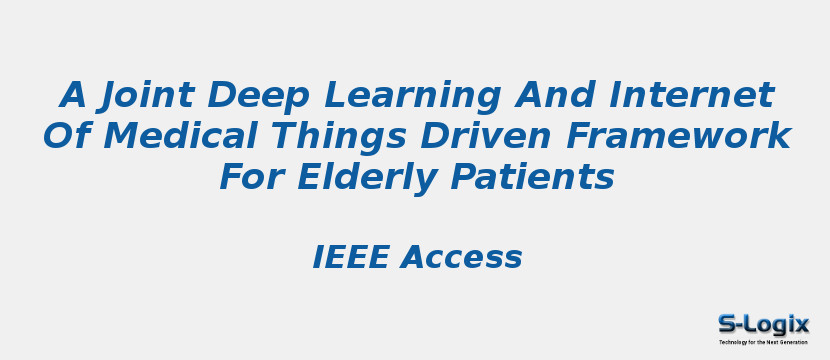Research Area: Internet of Things
Deep learning (DL) driven cardiac image processing methods manage and monitor the massive medical data collected by the internet of things (IoT) based on wearable devices. A Joint DL and IoT platform are known as Deep-IoMT that extracts the accurate cardiac image data from noisy conventional devices and tools. Besides, smart and dynamic technological trends have caught the attention of every corner such as, healthcare, which is possible through portable and lightweight sensor-enabled devices. Tiny size and resource-constrained nature restrict them to perform several tasks at a time. Thus, energy drain, limited battery lifetime, and high packet loss ratio (PLR) are the keys challenges to be tackled carefully for ubiquitous medical care. Sustainability (i.e., longer battery lifetime), energy efficiency, and reliability are the vital ingredients for wearable devices to empower a cost-effective and pervasive healthcare environment. Thus, the key contribution of this paper is the sixth fold. First, a novel self-adaptive power control-based enhanced efficient-aware approach (EEA) is proposed to reduce energy consumption and enhance the battery lifetime and reliability. The proposed EEA and conventional constant TPC are evaluated by adopting real-time data traces of static (i.e., sitting) and dynamic (i.e., cycling) activities and cardiac images. Second, a novel joint DL-IoMT framework is proposed for the cardiac image processing of remote elderly patients. Third, DL driven layered architecture for IoMT is proposed. Forth, the battery model for IoMT is proposed by adopting the features of a wireless channel and body postures. Fifth, network performance is optimized by introducing sustainability, energy drain, and PLR and average threshold RSSI indicators. Sixth, a Use-case for cardiac image-enabled elderly patients monitoring is proposed. Finally, it is revealed through experimental results in MATLAB that the proposed EEA scheme performs better than the constant TPC by enhancing energy efficiency, sustainability, and reliability during data transmission for elderly healthcare.
Keywords:
Author(s) Name: Tianle Zhang; Ali Hassan Sodhro; Zongwei Luo; Noman Zahid; Muhammad Wasim Nawaz; Sandeep Pirbhulal; Muhammad Muzammal
Journal name: IEEE Access
Conferrence name:
Publisher name: IEEE
DOI: 10.1109/ACCESS.2020.2989143
Volume Information: Volume: 8, Page(s): 75822 - 75832
